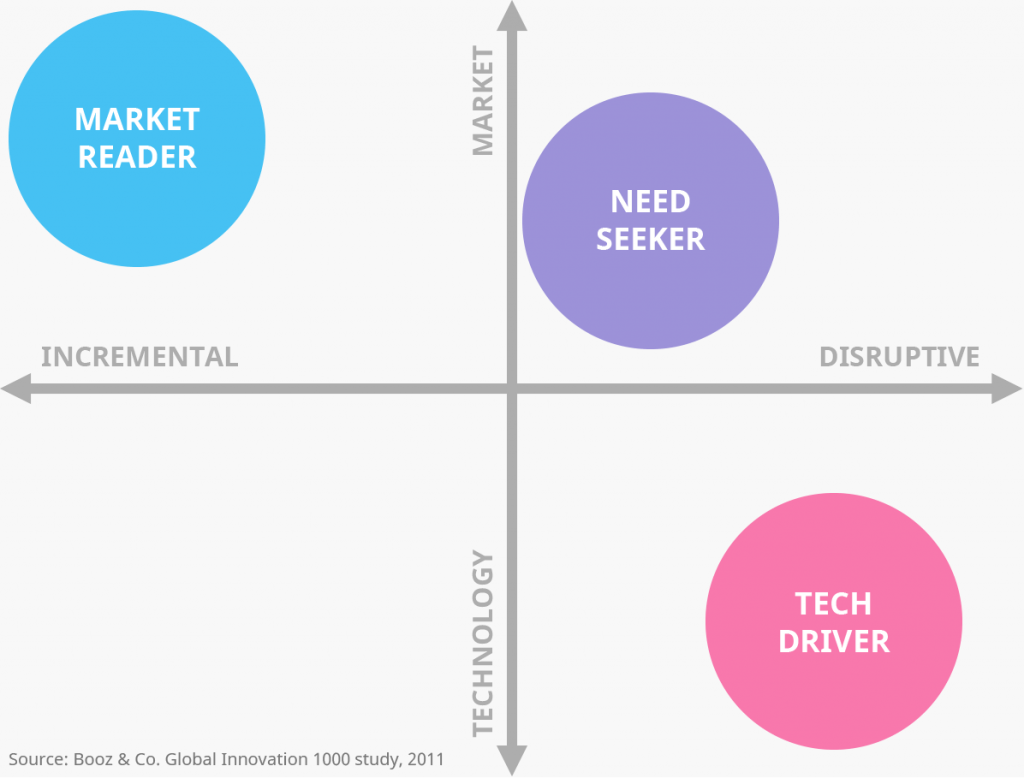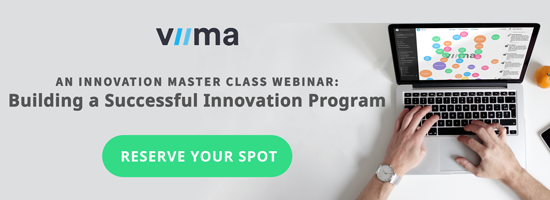Innovation is the Means, Not an End in Itself
Innovation is all the rage, and for good reason. The most successful innovators outperform other companies by a wide margin.
For example, according to the 2018 Global Innovation 1000 study, the sales growth of top innovators was 2.6 times and the operating income growth 2.5 times that of the average of the companies in the study.
Even more startling is the fact that during and immediately following the 2008 financial crisis, the difference grew to 7 times the average, which goes to show that the best innovators are much better suited to face unexpected changes in their operating environment.

Yet, because innovation is such a hot topic, many executives seem to forget that innovation should be the means to an end, namely better performance, not the end in itself.
The most common reasons for failing in innovation
While it’s difficult to provide exact numbers, it’s quite safe to assume that the majority of attempts at innovation, such as product launches and innovation labs, fail.
With my work at Viima, I’ve had the privilege of following this topic closely, both in theory and in practice.
There’s usually no shortage of ideas and excitement to create new products and services, and even to try new approaches to innovation, such as Design Thinking or the Lean Startup method.
However, probably the single biggest problem is organizations missing the forest for the trees in all of that excitement. This applies both at the level of an individual innovation, as well as the entire innovation program.

For example, when you’re working on an exciting new idea, it’s all too easy to get swept away and just focus on making your idea a reality when you should’ve first refined the idea to create as much value as possible and validated that the most critical assumptions related to the idea are correct, and that the idea makes sense from a strategic point of view.
We’ve also made that very mistake ourselves. Before founding Viima, our founding team developed a software product for close to six months without talking to a single prospective buyer. Once we did, we soon realized that a number of the hypotheses that we built our product around were wrong and even the ones we got right didn’t make a real difference for the buyers. Thus, we ended scrapping the idea and moved on to create what would later become Viima.
The role of innovation
In the end, innovation isn’t anything magical, it’s simply about finding new ways to create value – and hopefully capturing some of that value for yourself.
As long as you create much more value than the current alternatives (think 10x), your innovation is very likely to spread and when that happens, your business will grow.

Innovation, thus, is a tool for solving problems and driving business results. What’s more, given the dynamic nature of today’s world, it’s the only method that leads to sustained performance in the long run.
Succeeding in innovation
Now, there isn’t just a single “right†way to approach innovation. Different companies have found success by approaching innovation in very different ways. Amazon, for example, is famous for their obsession for customer-driven innovation, whereas IBM has long focused on basic research, which has led to numerous patents and Nobel prizes.
For an organization to succeed in innovation, you need to pick the right approach for the strategic goals you have.
For some, it might make more sense to focus on sustaining innovation, whereas others might want to work on disruptive innovations. Some might find success by closely following customer needs, whereas others might be better off focusing on solving hard technical problems.

Regardless of which approach you take, remember that innovation is a tool. And just like any other tool, you first need to pick the right one, then have the skills to use that tool and resources for fuelling it. To top it off, you should also have an organizational structure and culture that don’t prohibit you from using that tool.
If you already have an innovation program in your organization, or are considering building one, you might also want to reserve a seat at the Innovation Master Class Webinar that we’re hosting together with Innovation Excellence on How to Build a Successful Innovation Program on June 20th to learn more.
Wait! Before you go…
Choose how you want the latest innovation content delivered to you:
- Daily — RSS Feed — Email — Twitter — Facebook — Linkedin Today
- Weekly — Email Newsletter — Free Magazine — Linkedin Group
 Jesse Nieminen is the Co-founder and Chairman at Viima, the best way to collect and develop ideas. Viima’s innovation management software is already loved by thousands of organizations all the way to the Global Fortune 500. He’s passionate about helping leaders drive innovation in their organizations and frequently writes on the topic, usually in Viima’s blog.
Jesse Nieminen is the Co-founder and Chairman at Viima, the best way to collect and develop ideas. Viima’s innovation management software is already loved by thousands of organizations all the way to the Global Fortune 500. He’s passionate about helping leaders drive innovation in their organizations and frequently writes on the topic, usually in Viima’s blog.
NEVER MISS ANOTHER NEWSLETTER!
LATEST BLOGS
Credit Card Shenanigans
It must be great to be in the credit card business in the United States. Demand is relatively inelastic and regulation is lax, so you can charge whatever you want for an interest rate, increase your fees once or twice a year, and make additional money off cash withdrawals and foreign exchange transactions.
Read MoreBuilding an Experience
As people become ever more immune to traditional advertising and marketing, branding will become more important. Branding is all about building an emotional connection with customers. Making the decision to follow a strategy focused on building a brand is not without peril, however, as it means that you will have to choose to not do certain things, like pursue a low price strategy.
Read More- « Previous
- 1
- …
- 4,132
- 4,133
- 4,134




